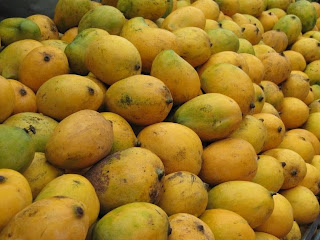On the road again....I've only been in Turkey a couple of days (I think!) but have some thoughts mainly stemming from the Istanbul airport. First, travel seems a time to rely on the kindness of others. As I struggled with 2 heavy suitcases and a full backpack, I searched for the airport carts to ease my burden. When I found them I tried to put a coin in, but alas, I had only paper money for Turkey, but some left over coins from Britian. As I fumbled the woman who just acquired her cart turned around and handed me a coin. I tried to give her a pound but she just laughed and waved me off.
Second, the Istanbul airport features food of a quality that I have never seen in any airport, except of course Orly and, oh yes, the chocolate in Brussels. But aside from those, this spread was incredible. AND, there were free samples. The best find was a delectible new treat I'm munching on right now, roasted chickpeas covered in  chocolate. What an incredibly good idea. I had to ask several people to help me find the container that I could buy, because they hadn't seen them, either, and they worked there. However, again, the kindness of strangers prevailed and 2 waiters from the hot food area next door came to my rescue! As you all know, I have no pride when it comes to my sweet tooth and its needs. Aside from Rick Bayless's newest venture at O'Hare and the occasional Wolfgang Puck oasis, the food situation in U.S. airports is in dire straits. The U.S. purveyors could take a page out of the hot food cafeteria in Istanbul's airport that featured 2 baskets of real onions and garlic at its entrance. What a sure sign that there is going to be delicious food inside! I was not dissapointed. There were real vegetable side dishes, hot and fresh and very tasty, and all those samples. I was afraid of missing my connecting flight and having to explain to the embassy official I was meeting why it was exactly I missed the plane with a 2.5 hour layover, so I left some food uninspected. I shall return, however!
chocolate. What an incredibly good idea. I had to ask several people to help me find the container that I could buy, because they hadn't seen them, either, and they worked there. However, again, the kindness of strangers prevailed and 2 waiters from the hot food area next door came to my rescue! As you all know, I have no pride when it comes to my sweet tooth and its needs. Aside from Rick Bayless's newest venture at O'Hare and the occasional Wolfgang Puck oasis, the food situation in U.S. airports is in dire straits. The U.S. purveyors could take a page out of the hot food cafeteria in Istanbul's airport that featured 2 baskets of real onions and garlic at its entrance. What a sure sign that there is going to be delicious food inside! I was not dissapointed. There were real vegetable side dishes, hot and fresh and very tasty, and all those samples. I was afraid of missing my connecting flight and having to explain to the embassy official I was meeting why it was exactly I missed the plane with a 2.5 hour layover, so I left some food uninspected. I shall return, however!
I've said before if you want to learn something about a culture watch the way its people cue up, or don't. The sign at the passport checkpoint said in red letters "Stay behind the RED LINE." I looked for the red line but couldn't see it because people were standing on it, in front of it, and kids were using it to play a game. Again the lines to get a boarding pass seemed just a suggestion to some.
I'm at a spa/resort near Antalya on the Mediterrean Coast to do my "work". Tough assignment, right? Yesterday I had a Turkish Hamam experience (Turkish bath with scrubbing, then bubbles, then olive oil) along with a clay facial but today I'm actually going to have to teach some. Oh well, I'll probably end my afternoon with a dip in the sea, followed by a buffet that has incredible cheeses, vegetables, and my best culinary friend, yogurt, all dressed up and spiced with great new tastes. I may reform my dislike of fresh mint just so I can include it in yogurt. I didn't tell the Turkish women I was eating with that their yogurt is runnier than the Greek yogurt we get, but it is, but it's very delicious, whether plain, or with herbs, or with fresh cherries which are in season and everywhere here.
I hope to post some photos to FLICKR soon, but internet service here is quite spotty so we'll see. I guess all the Turks, Russians, and Germans here are finding better ways to occupy their time in this gorgeous setting.


















